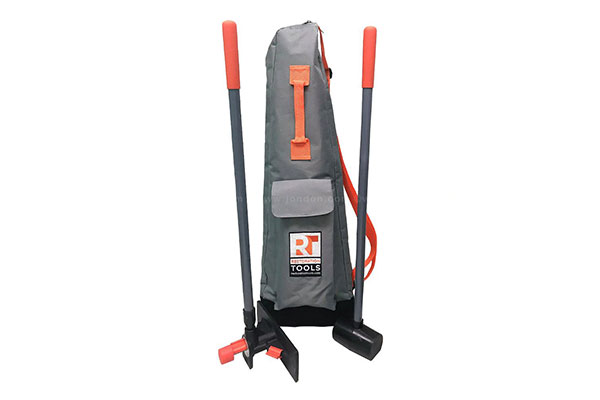The performance of specialty drying is a development that continues to evolve. Improvements in machines and technology are constantly occurring. Drying wall cavities and hardwood floors is not a job for your average carpet cleaner that happens to own a dehumidifier and a few air movers. It takes a restorer that understands the complexities involved and has the necessary meters and machines to complete this complicated form of structural drying.
Drying Wood Floors
Hardwood floors have returned to their past popularity. It takes more than a mop, a few fans, and a box fan to dry them after they have been affected by a water loss. Many times you don’t realize that the floor is being damaged until you can see the wood planks beginning to deform and warp or cup. Cupping, the upper expansion on the board’s edges, occurs as the boards begin to absorb water and expand. The first point of expansion is usually in an upward direction at the edges of individual boards. If you continue to ignore water damage to your hardwood floors, eventually the boards will expand to the point of buckling. Buckling occurs when the boards expand and one or more boards are forced upward out of place. Once buckling happens, that part of the floor will require replacement.
The first thing to do when you notice hardwood floor damage is to find the water leak that is causing the problem. Vacuum or mop up any standing water. Saving a hardwood floor is not a DIY task. Seek a water damage professional immediately. Reversing hardwood floor damage takes time, specialized equipment, and specialized knowledge. There are three basic methods of drying a hardwood floor:
Method One – set up containment around the room with the floor damage. By isolating the area the drying will occur faster. Install a LGR (low grain refrigerant) dehumidifier to begin lowering the room’s humidity. Install a panel drying system. This system uses plastic panels that are taped (painter’s tape works best) down on the floor and then connected through a series of hoses to vacuum unit. The vacuum draws the water from under the floor and out of the individual boards. A close eye needs to be kept on the progress, as the damage from over drying can be worse than the warping. Professionals will use a penetrating moisture meter with small pins that get hammered into the floor to check on drying progress
Method Two - this method uses a desiccant dehumidifier. Using a sheet of 6-mil poly, cover the wet area of the floor. Tape the poly down just enough to keep it from flapping excessively. Duct the processed air from the dehumidifier under the poly. Desiccants are very effective and the floor needs to be monitored closely both its surface temperature and its internal temperature.
Method Three – this method uses a heat drying system. Once again cover the floor with 6-mil poly and tape in down just enough to keep it from flapping. Duct the heat output under the poly. Place the thermostat control roughly in the center of the area to be dried and set the temperature to 100°-105°. Closely monitor the floor as it dries to prevent over heating and over drying.
Regardless of which method is used, the drying will usually not occur overnight. The water goes in faster that in comes out of hardwood. There are a couple of other “tricks” that can be employed. Remove the baseboards from the walls that cover the ends (not so much the edges) of the floor boards. A high pressure air mover than can be used to force air under the floor. Most hardwood floor boards are fluted, and will allow the air to circulate from one end to the other. A second “trick” is to dry the floor from underneath if the rooms below the floor are unfinished and don’t have a drywall ceiling. Place a LGR dehumidifier and a couple of air movers blowing straight up.
Wall Cavity Drying
Sometimes during a water loss the water gets deep enough to affect wall cavities or beneath cabinets and vanities. These hard to access areas must be dried to prevent mold growth. There are a couple of ways to do this and both involve the drilling of holes so that air can reach inside or underneath.
Method One – when areas like this get wet, it can be extremely hard to dry them with traditional methods, dehumidifiers and air movers alone. One way to access these areas is to remove he baseboards, or kick boards if a cabinet is involved, and then drill small holes, 1 ½”-2” in size, through the walls just above the sill plate or into the cabinet bases. Then an air mover can be fitted with a venting system and placed to force air into these spaces.
Method Two – this method works in a similar manner. Again remove the baseboards or kick boards. This time the technician will drill smaller holes and use a cavity wall drying system instead of vents. With this system you can also get enough airflow to dry insulation inside the walls. These machines can also be installed at or near the ceiling height if it is deemed necessary to do so.
No matter which method is used, re-installing the baseboards or kick boards will cover any drilled holes. If the holes were drilled near the ceiling, drywall repair may be required or the addition of a molding will cover the holes.
Why Use a Pro?
Drying hardwood floors or wall cavities quickly and successfully requires specialized equipment and knowledge. A homeowner will not be able run down to the neighborhood tool rental store and rent these machines. At Water Mold Fire Restoration we have the special equipment on hand, ready for your emergency call. Our technicians are trained in their usage and can be at your home or business in one hour or less. Contact us at 800-905-0277 or email us at help@watermoldfire.net. Our business is to help you get your life back to normal as quickly and safely as possible.








